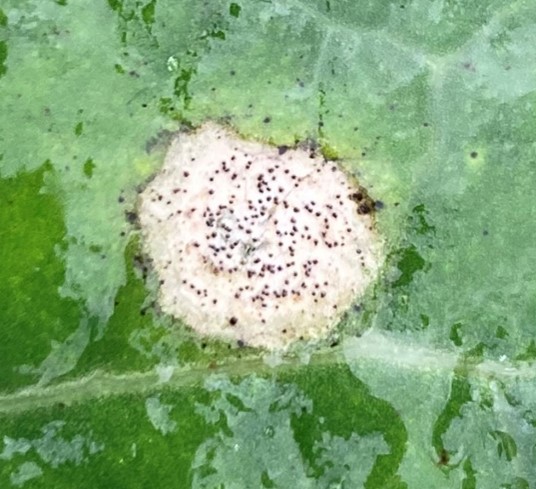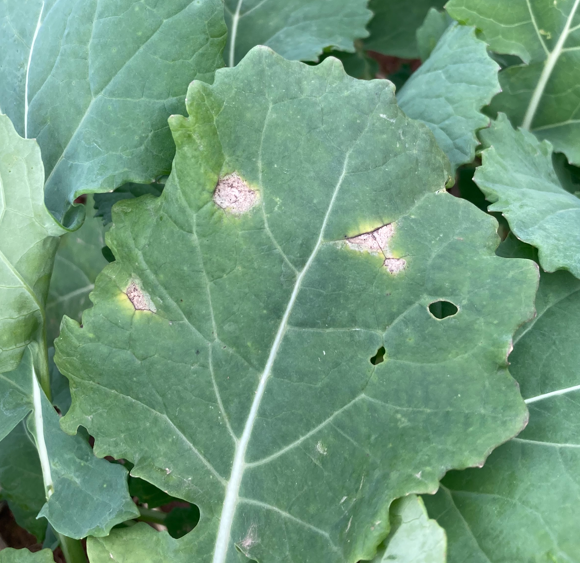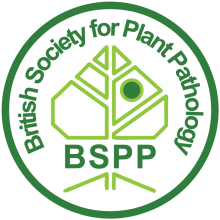Damage and Economic Importance
Phoma leaf spot and canker is one of the most damaging diseases in oilseed rape. Whilst leaf spots have minimal impact on growth and yield, severe cankers in the stem can cause lodging and senescence, subsequently having a greater negative impact.
The disease is more of a threat in the South due to the pathogen favouring warmer climates. The risk is generally lower north of Lincolnshire, as cold weather slows down disease development, resulting in reduced canker severity by harvest and a delay of ascopores release the following autumn. However, with climate change pushing global temperatures higher, there is a growing risk of disease and spread to northern parts of the country. Tackling this disease effectively is key to protecting the country’s oilseed supply.
Appearance and lifecycle
For both pathogens, the disease cycle is similar. The disease survives over summer on crop debris, particularly the taproot and stem bases of old oilseed rape stubble. Ascospores from this are released and spread by the wind onto young, susceptible plants.
August/early September is when spotting on leaves can start. The moist conditions cause ascospores to germinate, with lesions appearing 7-15 days after infection (depending on temperature), starting on lower leaves then spreading upwards due to rain splash.
From the leaf spot lesions, the fungus spreads to the stem and down to the base where it incubates until early spring, when rapid fungal growth produces a visible stem rot or canker.

Symptoms:
L. maculans (Phoma A)
- Tawny coloured lesions with dark specs (pycnidia)*
- Stem-base cankers
L. biglobosa (Phoma B)
- Smaller and darker with fewer pycnidia*
- Stem lesions develop on the upper stem
*Both types vary though according to interactions with cultivar and recent weather and some spots have a yellow halo and browning of leaf veins

Management Recommendations
Key drivers of phoma risk:
- Crop residues - the main source of spores
- Region
- Climate – warm and wet summer/autumn weather is more favourable for spore release, infection and development. Higher autumn/winter temperatures encourage fungal development on the plant
- Small plants – more susceptible and disease moves faster
- Varieties – different levels of susceptibility
Varietal Resistance:
Currently, no varieties are completely resistant, but some varieties escape infection due to resistant genes. These either prevent spores from infecting or reduce severity of disease when infection does occur.
In 2022, commercially available varieties have resistance ratings of 4 to 9 (pages 29 & 30 of the AHDB recommended list). Although two varieties are rated as 9 (fully resistant to the disease), one of those, ‘Crossfit’ is a hybrid type that is only recommended for use on clubroot-affected land. The other is a hybrid type called ‘Tennyson’, which is recommended only for the East-West region of the UK. Six other varieties have a score of 8 and ten have a score of 7, so most current varieties are resistant or moderately resistant. This is due to recent success in resistance breeding against L. maculans, although not necessarily improving resistance to L. biglobosa.
Fungicides:
The best timing of fungicides is just prior to the first significant release of ascospores in the autumn (ideally before more than 10-20% of plants have phoma leaf spots). Close monitoring is key to getting this right. Catching infection in time is also important as fungicides have little effect once the stem has been infected. Timing of spore release varies due to the weather, but AHDB have a handy Phoma leaf spot forecast to help guide monitoring and timing of sprays in the autumn.
To adhere with an IPM strategy and reduce levels of resistance, more susceptible varieties should be prioritised and thresholds must be stuck to. For example, the AHDB recommends only spraying resistant varieties if >20% have phoma leaf spot. In colder weather, when leaf spotting occurs later in the autumn, spraying resistant varieties may even be omitted altogether. For susceptible varieties, a two-spray programme autumn fungicide regime is best if phoma leaf spotting occurs early in the autumn (before mid-October), while a single autumn spray is effective if phoma leaf spotting is late (appearing after mid-October). In all cases, monitoring is key as each situation and climate is different. Consider a second spray, if not already planned, if reinfection is seen.
Information on fungicide efficacy is available from the AHDB – see: page 35 onwards in this link.
Some of the text on this page comes from Rothamsted's Croprotect web platform at https://croprotect.com/diseases/septoria-leaf-blotch. This page is also supported by funding from The British Society for Plant Pathology (BSPP).






